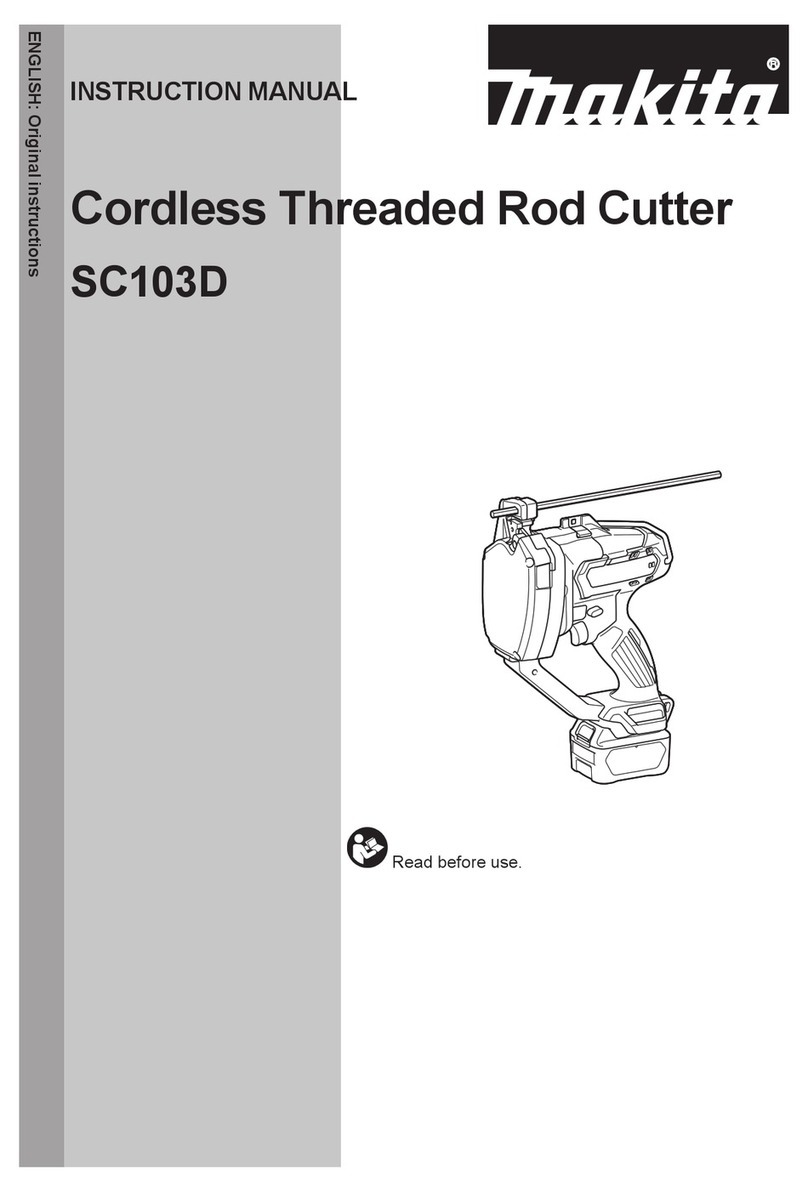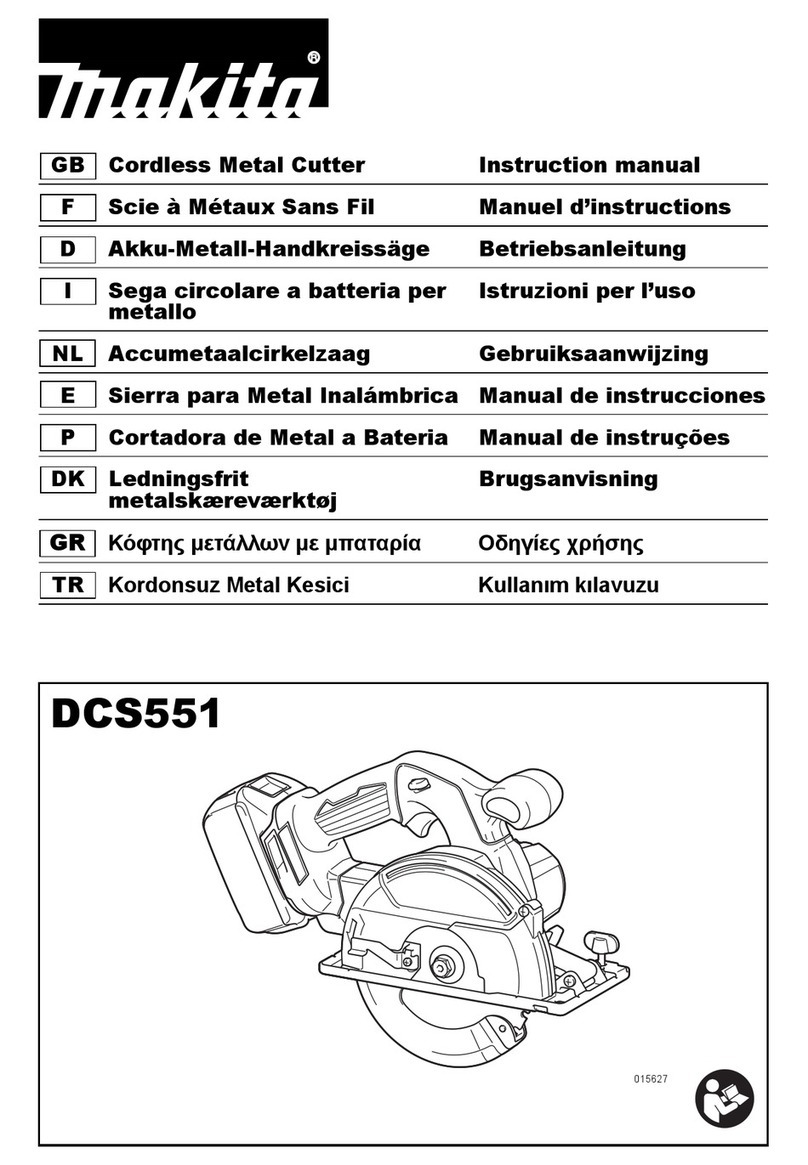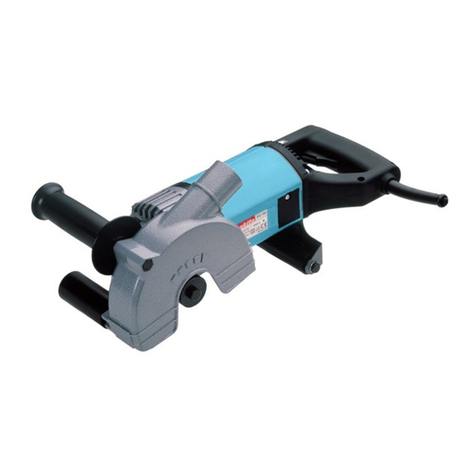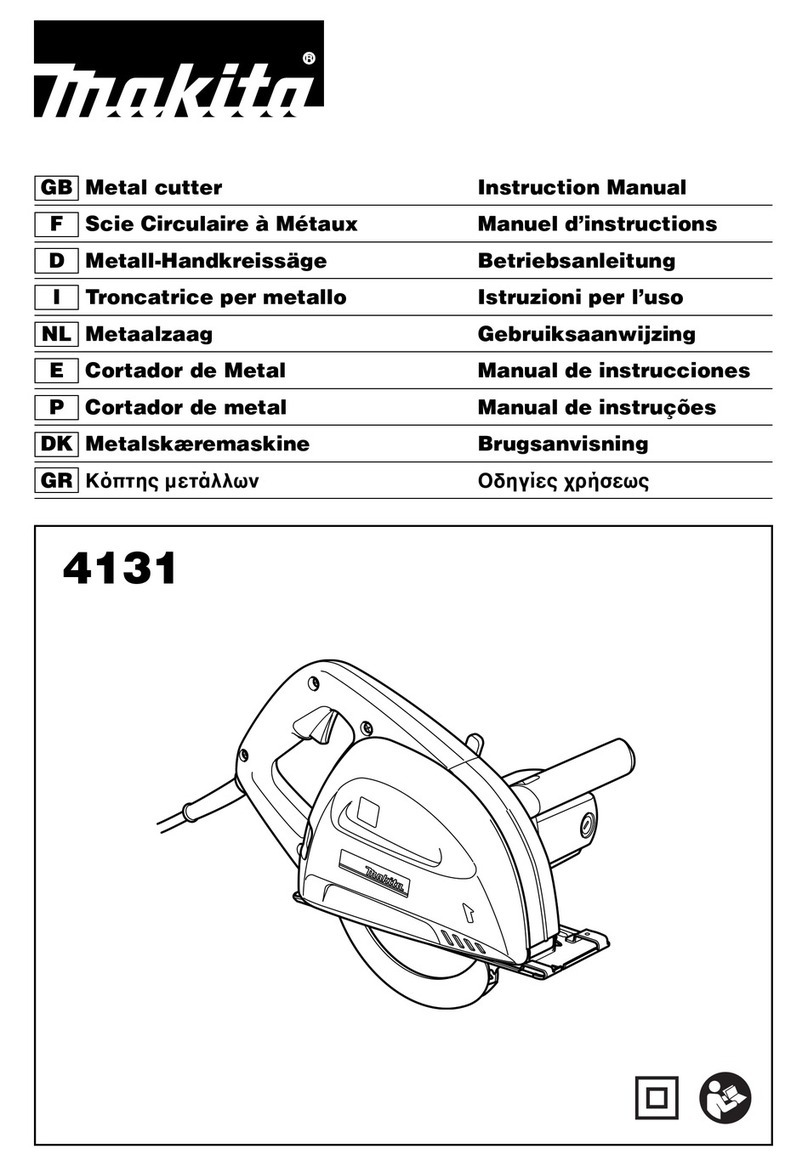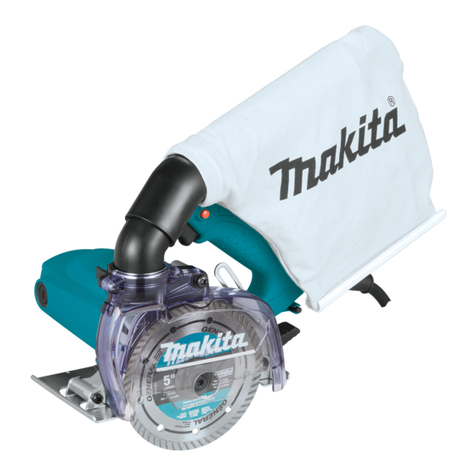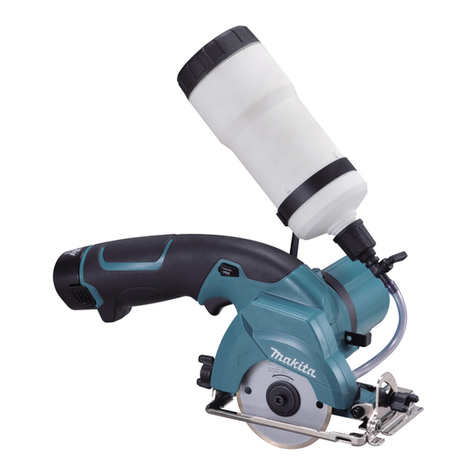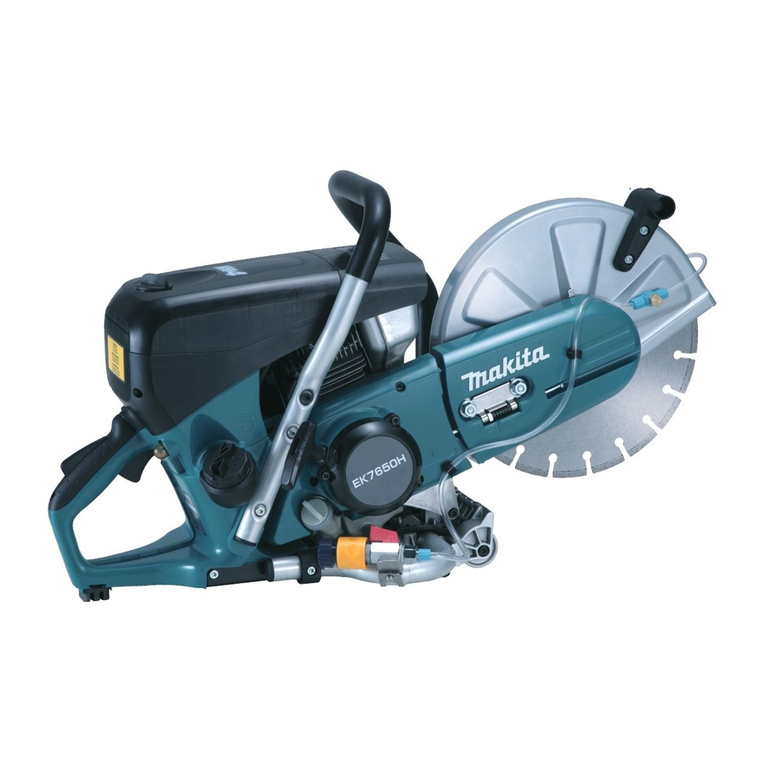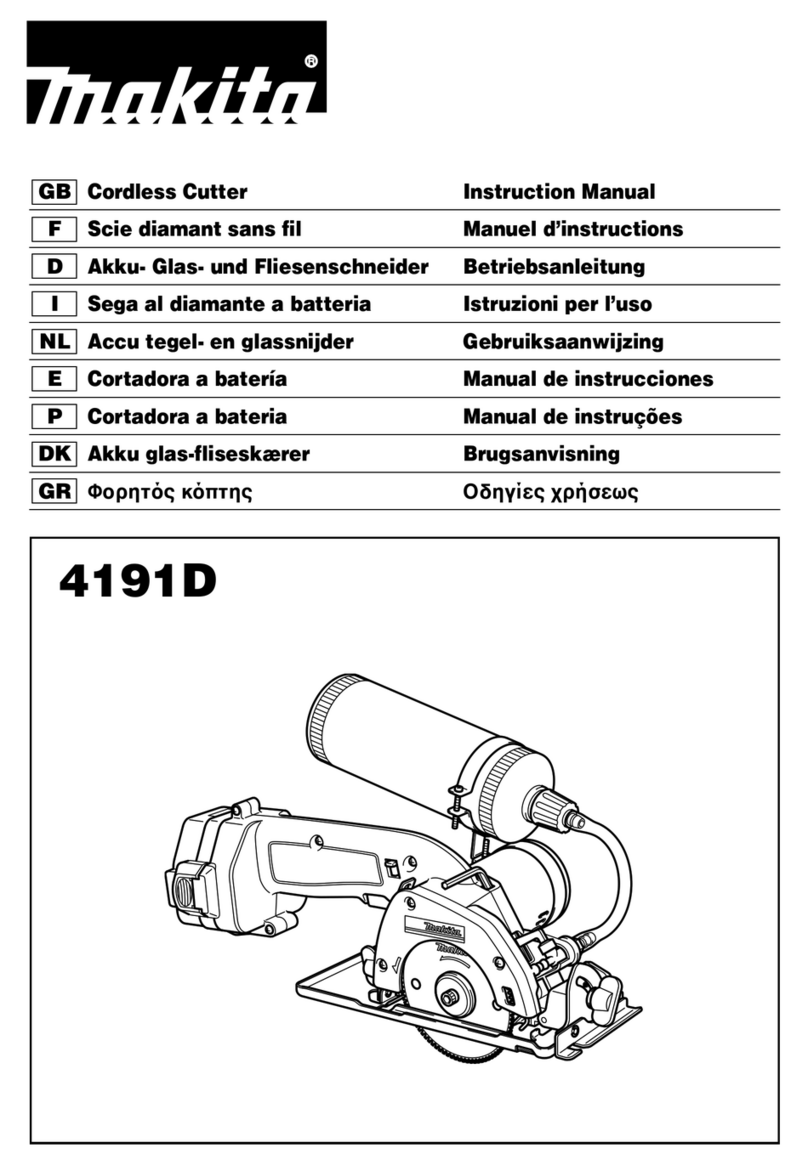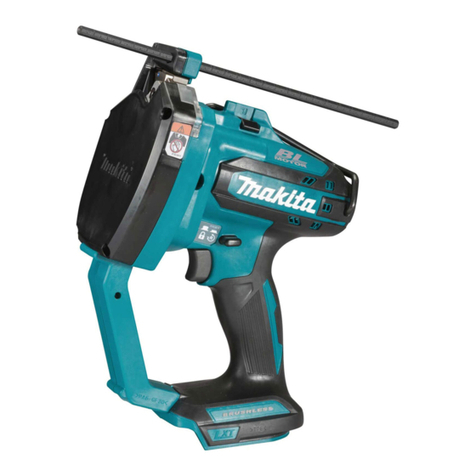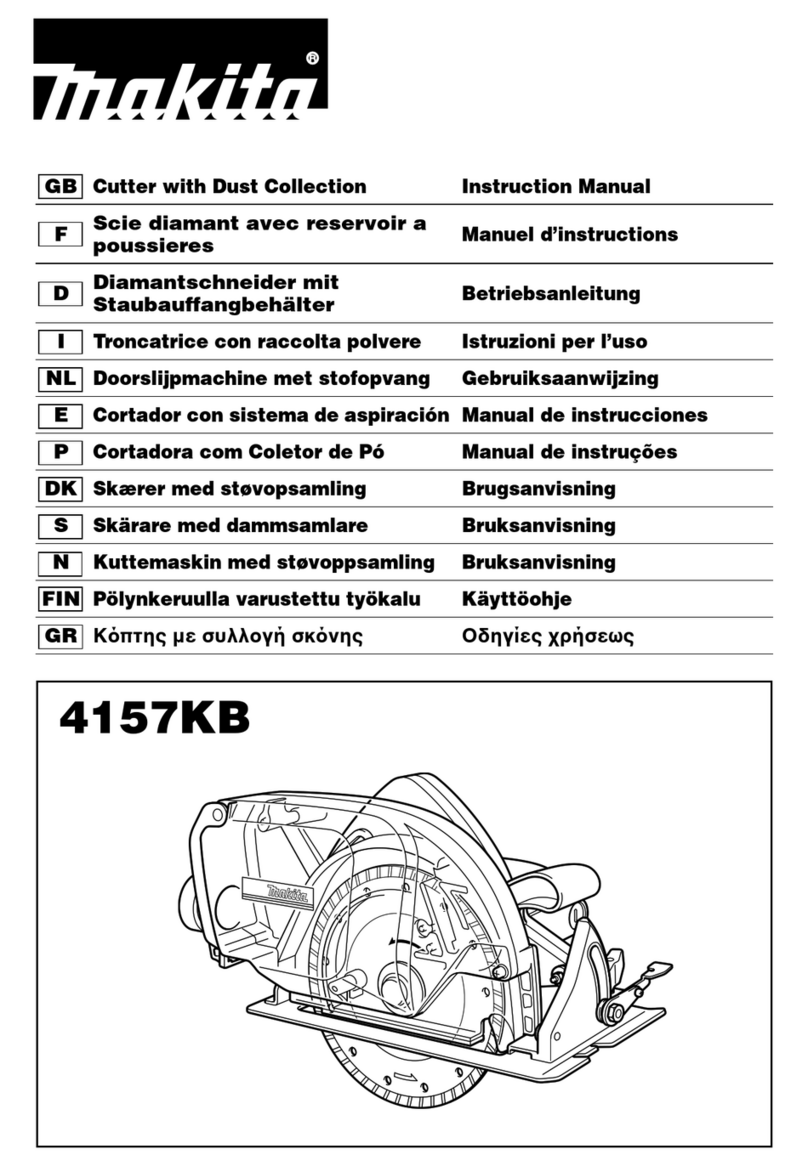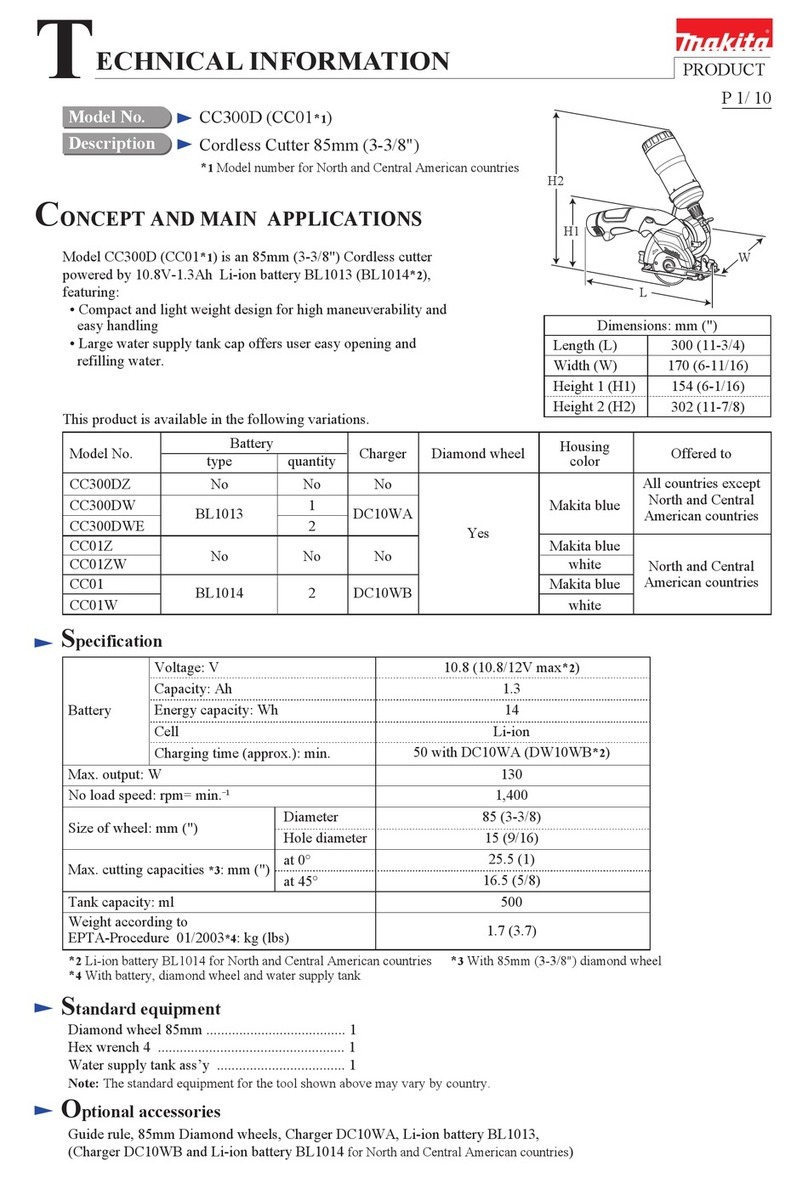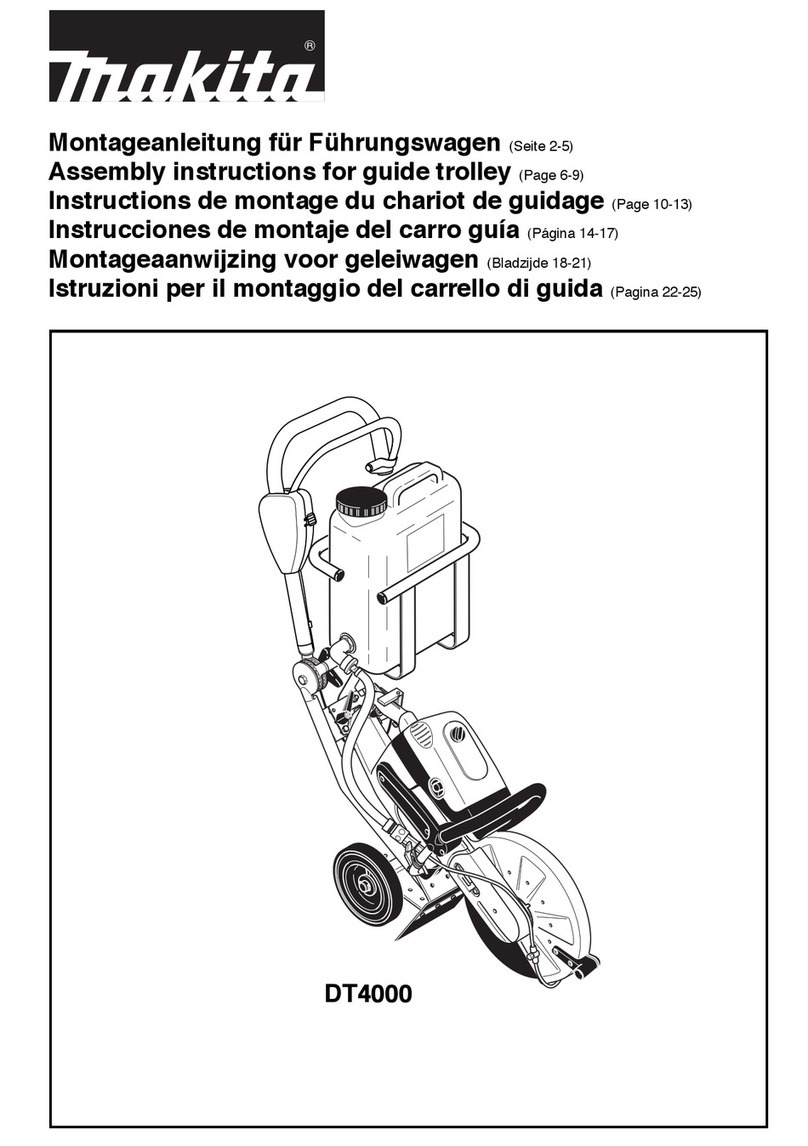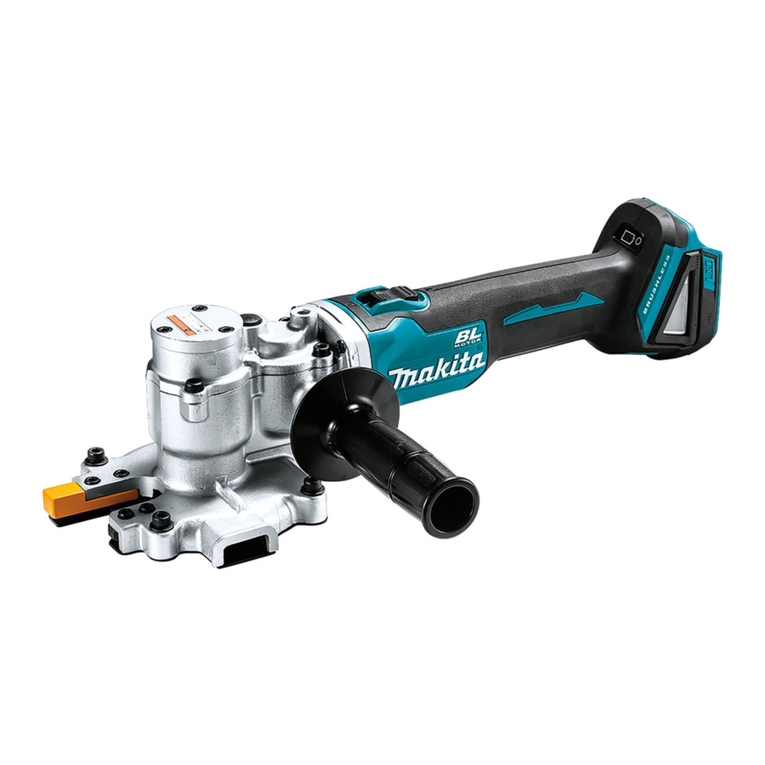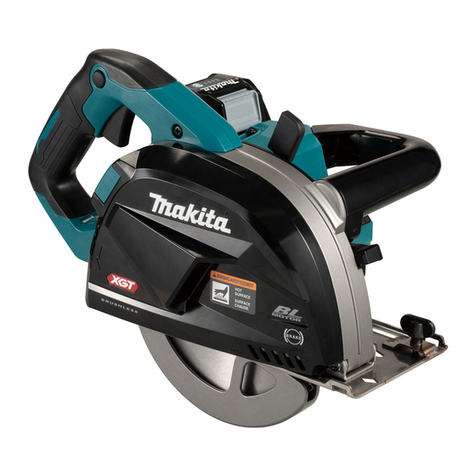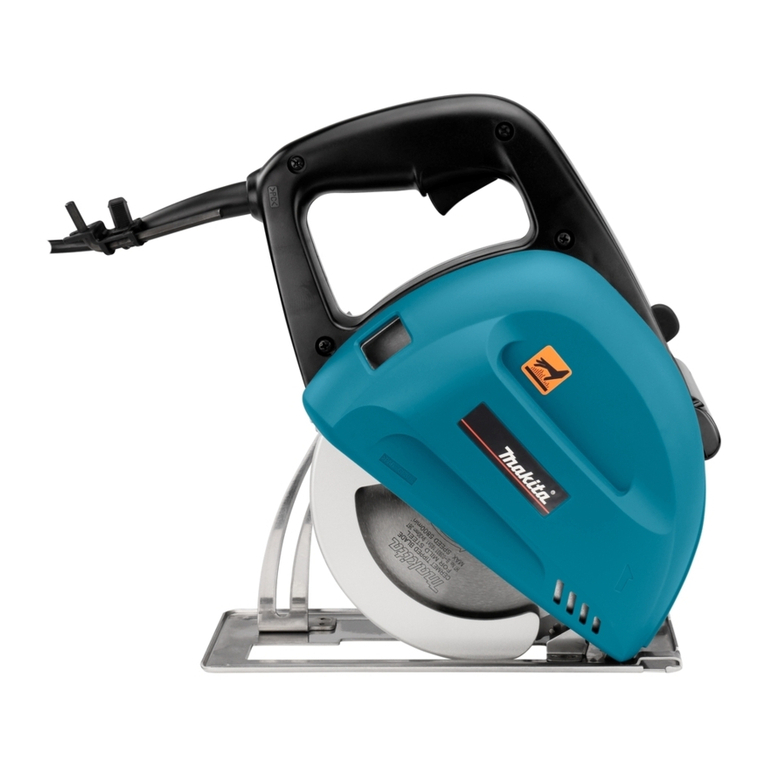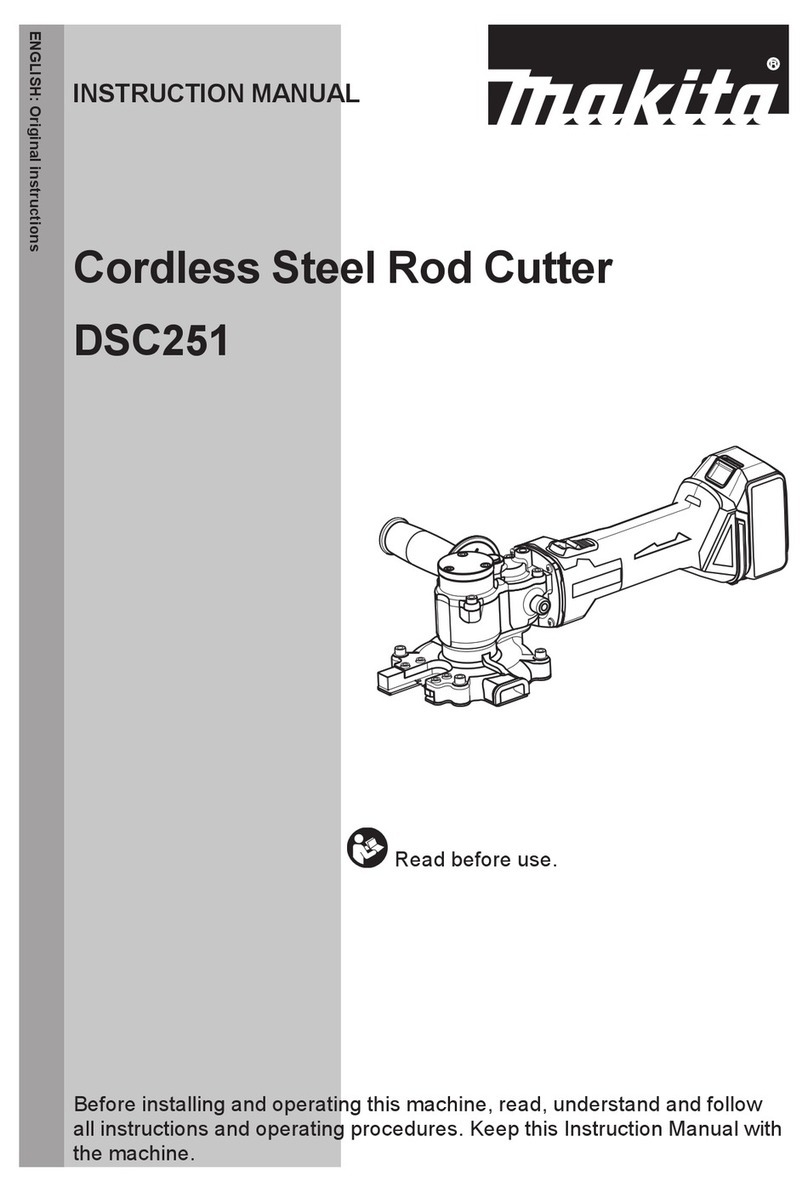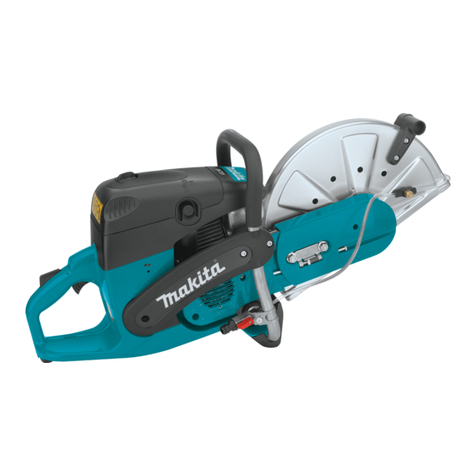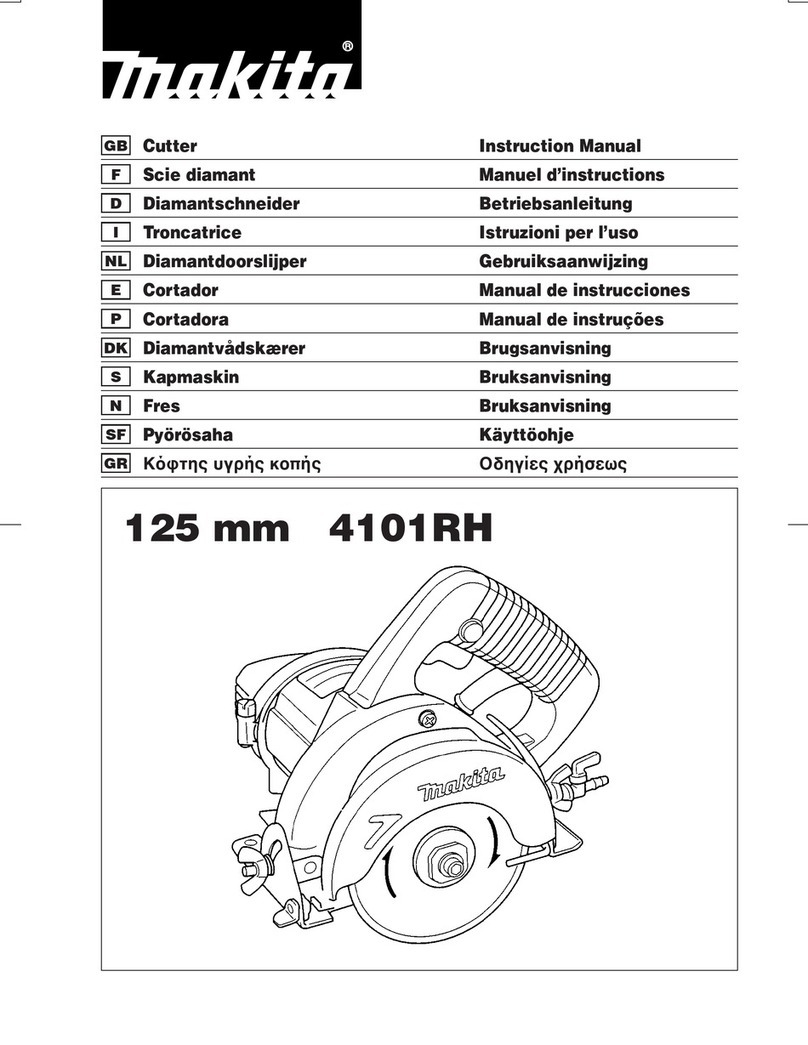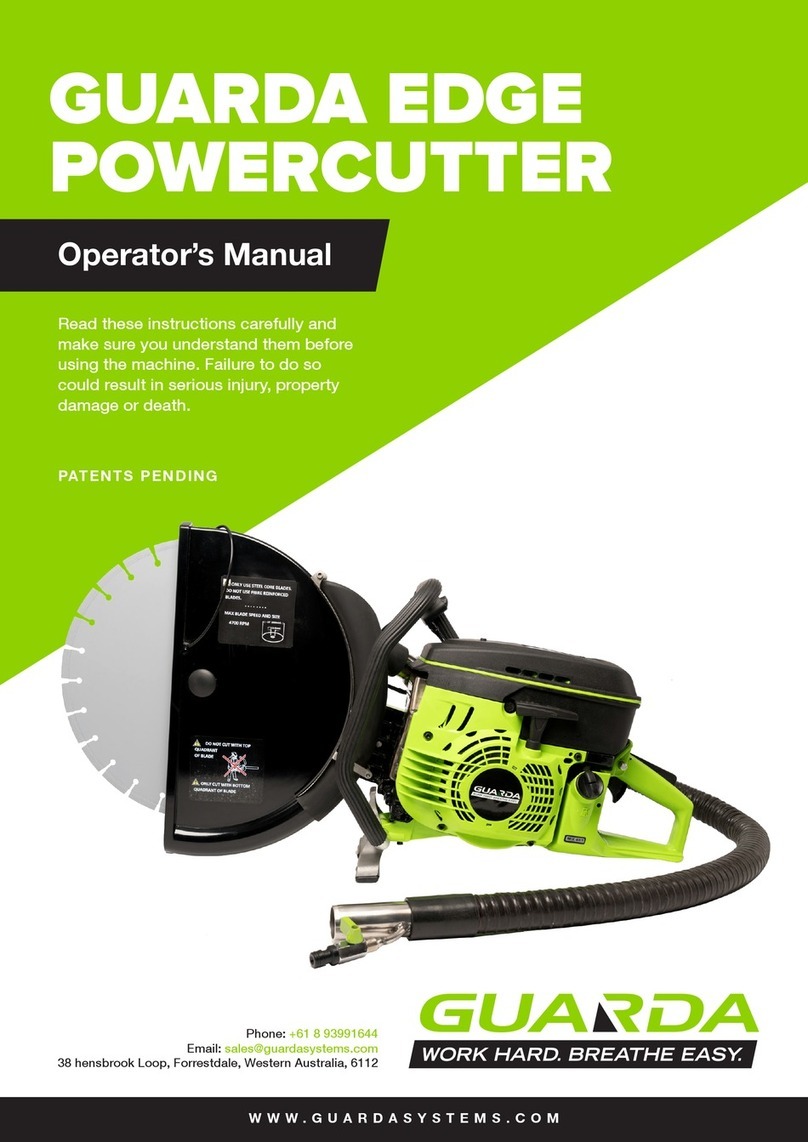
6ENGLISH
7. The arbour hole size of wheels and anges
must properly t the spindle of the power tool.
Wheelsandangeswitharbourholesthatdonot
match the mounting hardware of the power tool
willrunoutofbalance,vibrateexcessivelyand
may cause loss of control.
8. Do not use damaged wheels. Before each
use, inspect the wheels for chips and cracks.
If power tool or wheel is dropped, inspect for
damage or install an undamaged wheel. After
inspecting and installing the wheel, position
yourself and bystanders away from the plane
of the rotating wheel and run the power tool
at maximum no load speed for one minute.
Damagedwheelswillnormallybreakapartduring
this test time.
9. Wear personal protective equipment.
Depending on application, use face shield,
safety goggles or safety glasses. As appro-
priate, wear dust mask, hearing protectors,
gloves and shop apron capable of stopping
small abrasive or workpiece fragments. The
eyeprotectionmustbecapableofstoppingying
debrisgeneratedbyvariousoperations.Thedust
maskorrespiratormustbecapableofltrating
particlesgeneratedbyyouroperation.Prolonged
exposure to high intensity noise may cause hear-
ing loss.
10. Keep bystanders a safe distance away from
work area. Anyone entering the work area
must wear personal protective equipment.
Fragmentsofworkpieceorofabrokenwheelmay
yawayandcauseinjurybeyondimmediatearea
of operation.
11. Hold the power tool by insulated gripping
surfaces only, when performing an operation
where the cutting accessory may contact hid-
den wiring or its own cord.Cuttingaccessory
contactinga“live”wiremaymakeexposedmetal
partsofthepowertool“live”andcouldgivethe
operator an electric shock.
12. Position the cord clear of the spinning acces-
sory.Ifyoulosecontrol,thecordmaybecutor
snaggedandyourhandorarmmaybepulledinto
the spinning wheel.
13. Never lay the power tool down until the acces-
sory has come to a complete stop. Thespinning
wheelmaygrabthesurfaceandpullthepower
tool out of your control.
14. Do not run the power tool while carrying it at
your side.Accidentalcontactwiththespinning
accessory could snag your clothing, pulling the
accessoryintoyourbody.
15. Regularly clean the power tool’s air vents.The
motor’s fan will draw the dust inside the housing
and excessive accumulation of powdered metal
may cause electrical hazards.
16. Do not operate the power tool near ammable
materials. Sparks could ignite these materials.
Kickback and related warnings
Kickbackisasuddenreactiontoapinchedorsnagged
rotatingwheel.Pinchingorsnaggingcausesrapid
stalling of the rotating wheel which in turn causes the
uncontrolledpowertooltobeforcedinthedirection
opposite of the wheel’s rotation at the point of the
binding.
Forexample,ifanabrasivewheelissnaggedor
pinchedbytheworkpiece,theedgeofthewheelthatis
entering into the pinch point can dig into the surface of
thematerialcausingthewheeltoclimboutorkickout.
Thewheelmayeitherjumptowardorawayfromthe
operator, depending on direction of the wheel’s move-
mentatthepointofpinching.Abrasivewheelsmayalso
breakundertheseconditions.
Kickbackistheresultofpowertoolmisuseand/or
incorrectoperatingproceduresorconditionsandcanbe
avoidedbytakingproperprecautionsasgivenbelow.
1. Maintain a rm grip on the power tool and
position your body and arm to allow you to
resist kickback forces. Always use auxiliary
handle, if provided, for maximum control over
kickback or torque reaction during start-up.
Theoperatorcancontroltorquereactionsorkick-
backforces,ifproperprecautionsaretaken.
2. Never place your hand near the rotating acces-
sory.Accessorymaykickbackoveryourhand.
3. Do not position your body in line with the
rotating wheel.Kickbackwillpropelthetoolin
direction opposite to the wheel’s movement at the
point of snagging.
4. Use special care when working corners, sharp
edges etc. Avoid bouncing and snagging the
accessory.Corners,sharpedgesorbouncing
have a tendency to snag the rotating accessory
andcauselossofcontrolorkickback.
5. Do not attach a saw chain, woodcarving blade,
segmented diamond wheel with a peripheral
gap greater than 10 mm or toothed saw blade.
Suchbladescreatefrequentkickbackandlossof
control.
6. Do not “jam” the wheel or apply excessive
pressure. Do not attempt to make an excessive
depth of cut. Overstressing the wheel increases
theloadingandsusceptibilitytotwistingorbinding
ofthewheelinthecutandthepossibilityofkick-
backorwheelbreakage.
7. When wheel is binding or when interrupting
a cut for any reason, switch o the power
tool and hold the power tool motionless until
the wheel comes to a complete stop. Never
attempt to remove the wheel from the cut while
the wheel is in motion otherwise kickback may
occur. Investigate and take corrective action to
eliminatethecauseofwheelbinding.
8. Do not restart the cutting operation in the
workpiece. Let the wheel reach full speed and
carefully re-enter the cut.Thewheelmaybind,
walkuporkickbackifthepowertoolisrestartedin
the workpiece.
9. Support panels or any oversized workpiece to
minimize the risk of wheel pinching and kick-
back.Largeworkpiecestendtosagundertheir
ownweight.Supportsmustbeplacedunderthe
workpiece near the line of cut and near the edge
oftheworkpieceonbothsidesofthewheel.
